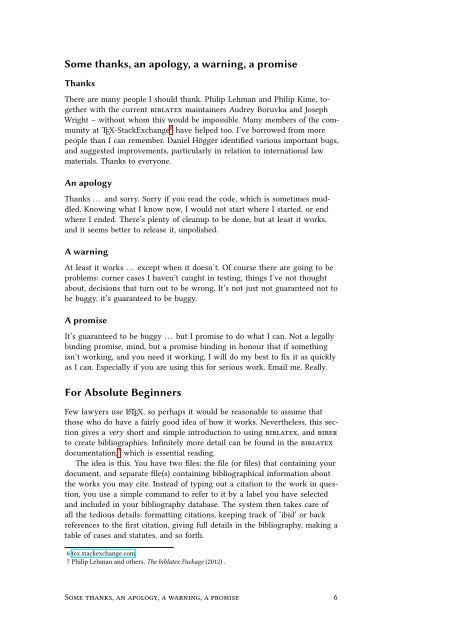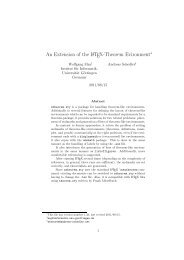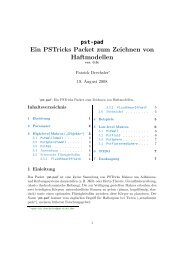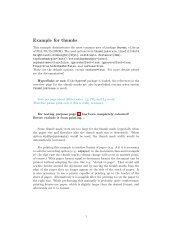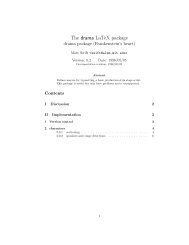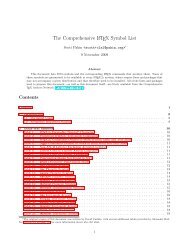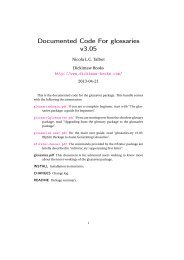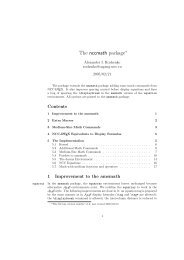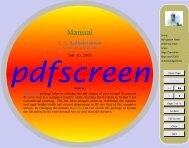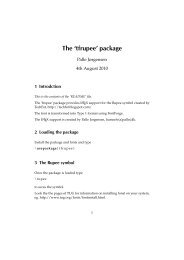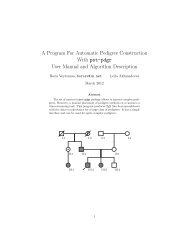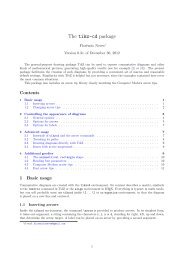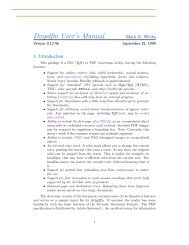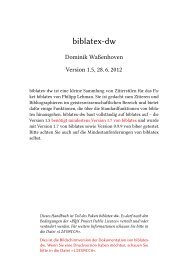oscola.pdf. - Mirrors.med.harvard.edu
oscola.pdf. - Mirrors.med.harvard.edu
oscola.pdf. - Mirrors.med.harvard.edu
Create successful ePaper yourself
Turn your PDF publications into a flip-book with our unique Google optimized e-Paper software.
Some thanks, an apology, a warning, a promise<br />
Thanks<br />
There are many people I should thank. Philip Lehman and Philip Kime, together<br />
with the current biblatex maintainers Audrey Boruvka and Joseph<br />
Wright – without whom this would be impossible. Many members of the community<br />
at TEX-StackExchange 6 have helped too. I’ve borrowed from more<br />
people than I can remember. Daniel Högger identified various important bugs,<br />
and suggested improvements, particularly in relation to international law<br />
materials. Thanks to everyone.<br />
An apology<br />
Thanks ... and sorry. Sorry if you read the code, which is sometimes muddled.<br />
Knowing what I know now, I would not start where I started, or end<br />
where I ended. There’s plenty of cleanup to be done, but at least it works,<br />
and it seems better to release it, unpolished.<br />
A warning<br />
At least it works ... except when it doesn’t. Of course there are going to be<br />
problems: corner cases I haven’t caught in testing, things I’ve not thought<br />
about, decisions that turn out to be wrong. It’s not just not guaranteed not to<br />
be buggy, it’s guaranteed to be buggy.<br />
A promise<br />
It’s guaranteed to be buggy ... but I promise to do what I can. Not a legally<br />
binding promise, mind, but a promise binding in honour that if something<br />
isn’t working, and you need it working, I will do my best to fix it as quickly<br />
as I can. Especially if you are using this for serious work. Email me. Really.<br />
For Absolute Beginners<br />
Few lawyers use LATEX, so perhaps it would be reasonable to assume that<br />
those who do have a fairly good idea of how it works. Nevertheless, this section<br />
gives a very short and simple introduction to using biblatex, and biber<br />
to create bibliographies. Infinitely more detail can be found in the biblatex<br />
documentation, 7 which is essential reading.<br />
The idea is this. You have two files: the file (or files) that containing your<br />
document, and separate file(s) containing bibliographical information about<br />
the works you may cite. Instead of typing out a citation to the work in question,<br />
you use a simple command to refer to it by a label you have selected<br />
and included in your bibliography database. The system then takes care of<br />
all the tedious details: formatting citations, keeping track of ‘ibid’ or back<br />
references to the first citation, giving full details in the bibliography, making a<br />
table of cases and statutes, and so forth.<br />
6 tex.stackexchange.com<br />
7 Philip Lehman and others, The biblatex Package (2012) .<br />
Some thanks, an apology, a warning, a promise 6


